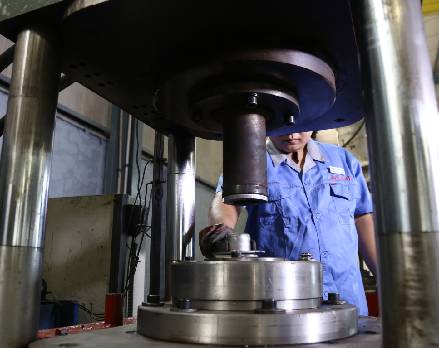 Afrikaans
Afrikaans  Albanian
Albanian  Amharic
Amharic  Arabic
Arabic  Armenian
Armenian  Azerbaijani
Azerbaijani  Basque
Basque  Belarusian
Belarusian  Bengali
Bengali  Bosnian
Bosnian  Bulgarian
Bulgarian  Catalan
Catalan  Cebuano
Cebuano  Corsican
Corsican  Croatian
Croatian  Czech
Czech  Danish
Danish  Dutch
Dutch  English
English  Esperanto
Esperanto  Estonian
Estonian  Finnish
Finnish  French
French  Frisian
Frisian  Galician
Galician  Georgian
Georgian  German
German  Greek
Greek  Gujarati
Gujarati  Haitian Creole
Haitian Creole  hausa
hausa  hawaiian
hawaiian  Hebrew
Hebrew  Hindi
Hindi  Miao
Miao  Hungarian
Hungarian  Icelandic
Icelandic  igbo
igbo  Indonesian
Indonesian  irish
irish  Italian
Italian  Japanese
Japanese  Javanese
Javanese  Kannada
Kannada  kazakh
kazakh  Khmer
Khmer  Rwandese
Rwandese  Korean
Korean  Kurdish
Kurdish  Kyrgyz
Kyrgyz  Lao
Lao  Latin
Latin  Latvian
Latvian  Lithuanian
Lithuanian  Luxembourgish
Luxembourgish  Macedonian
Macedonian  Malgashi
Malgashi  Malay
Malay  Malayalam
Malayalam  Maltese
Maltese  Maori
Maori  Marathi
Marathi  Mongolian
Mongolian  Myanmar
Myanmar  Nepali
Nepali  Norwegian
Norwegian  Norwegian
Norwegian  Occitan
Occitan  Pashto
Pashto  Persian
Persian  Polish
Polish  Portuguese
Portuguese  Punjabi
Punjabi  Romanian
Romanian  Russian
Russian  Samoan
Samoan  Scottish Gaelic
Scottish Gaelic  Serbian
Serbian  Sesotho
Sesotho  Shona
Shona  Sindhi
Sindhi  Sinhala
Sinhala  Slovak
Slovak  Slovenian
Slovenian  Somali
Somali  Spanish
Spanish  Sundanese
Sundanese  Swahili
Swahili  Swedish
Swedish  Tagalog
Tagalog  Tajik
Tajik  Tamil
Tamil  Tatar
Tatar  Telugu
Telugu  Thai
Thai  Turkish
Turkish  Turkmen
Turkmen  Ukrainian
Ukrainian  Urdu
Urdu  Uighur
Uighur  Uzbek
Uzbek  Vietnamese
Vietnamese  Welsh
Welsh  Bantu
Bantu  Yiddish
Yiddish  Yoruba
Yoruba  Zulu
Zulu Understanding the Importance and Functionality of Bearing Housings in Mechanical Applications
Understanding Bearing Housing Key Components and Importance
Bearing housing, a critical component in machinery and equipment, plays a vital role in supporting and protecting bearings, which are essential for the smooth operation of rotating elements. This article will delve into the significance of bearing housing, its types, design considerations, and its applications across various industries.
Definition and Purpose
Bearing housing, often referred to as a bearing pedestal or housing assembly, is designed to securely accommodate bearings while providing stability and alignment for shafts. Its primary purpose is to support the load imposed by the shaft, reduce vibration, and prevent contamination from external environments. By providing a secure location for bearings, bearing housings help maintain their functionality and prolong their lifespan.
Types of Bearing Housings
There are several types of bearing housings, each tailored for specific applications and environments
1. Foot-mounted Housing This type is commonly used in applications where the mounting surface is flat. It is suitable for both radial and axial loads and is bolted directly to the machine frame.
2. Flange-mounted Housing Flange-mounted housings are ideal for applications requiring flexibility in mounting. They are often used in conveyor systems, allowing for easy installation and disassembly.
3. Take-up Housing This housing design is used for adjusting the tension of belts or chains in conveyor systems. The take-up feature allows operators to easily modify the position of the bearing, ensuring optimal tension.
4. Split Housing Split housings are designed for ease of maintenance, allowing for the quick removal of the bearing without the need to dismantle the entire assembly. This is particularly beneficial in hard-to-reach applications.
5. Sealed Housing Featuring integrated seals, this type of housing protects the bearings from dirt, dust, and moisture. Sealed housings are critical in industrial environments where exposure to contaminants is high.
Design Considerations
When designing bearing housings, several factors must be taken into account
bearing housing

1. Material Selection Bearing housings are typically made from cast iron, steel, or composites. The material choice affects the housing’s strength, weight, and resistance to corrosion.
2. Load Requirements It’s essential to assess the type and magnitude of loads the bearing will experience. This assessment guides the design to ensure adequate support and alignment.
3. Environmental Conditions Consideration of the operating environment is crucial. Housings used in harsh conditions may require additional protective features, such as seals or coatings.
4. Cooling and Lubrication Proper lubrication is vital for bearing functionality. Some bearing housings incorporate systems for oil or grease lubrication to ensure optimal performance.
Applications Across Industries
Bearing housing is widely used across various industries, including
- Manufacturing In conveyor systems, production machinery, and processing equipment, bearing housings are essential for maintaining operational efficiency.
- Automotive In vehicles, bearing housings support critical components such as wheels, crankshafts, and transmissions, ensuring smooth motion and handling.
- Aerospace The aerospace industry relies on high-performance bearing housings to support engines, landing gear, and various aircraft components.
- Energy In wind turbines, bearing housings endure significant stress and environmental exposure, necessitating robust designs for reliable energy generation.
Conclusion
Bearing housing is an indispensable component in the machinery realm, providing critical support, protection, and alignment for bearings. Understanding its types, design considerations, and applications can significantly enhance operational performance and reliability across various sectors. As industries continue to evolve, the role of bearing housings in ensuring machinery efficiency and longevity will remain paramount, paving the way for advancements in technology and engineering design.
-
Revolutionizing Conveyor Reliability with Advanced Rubber Lagging PulleysNewsJul.22,2025
-
Powering Precision and Durability with Expert Manufacturers of Conveyor ComponentsNewsJul.22,2025
-
Optimizing Conveyor Systems with Advanced Conveyor AccessoriesNewsJul.22,2025
-
Maximize Conveyor Efficiency with Quality Conveyor Idler PulleysNewsJul.22,2025
-
Future-Proof Your Conveyor System with High-Performance Polyurethane RollerNewsJul.22,2025
-
Driving Efficiency Forward with Quality Idlers and RollersNewsJul.22,2025





























